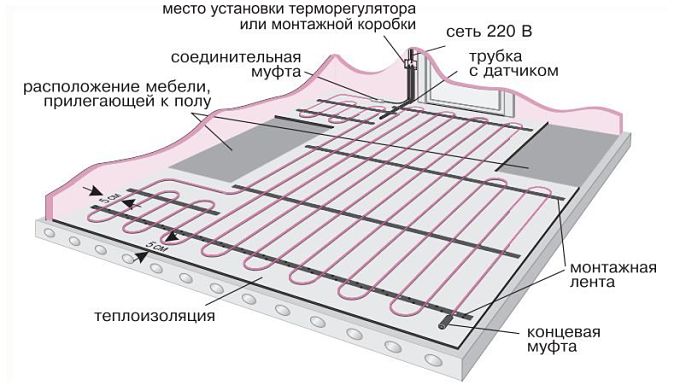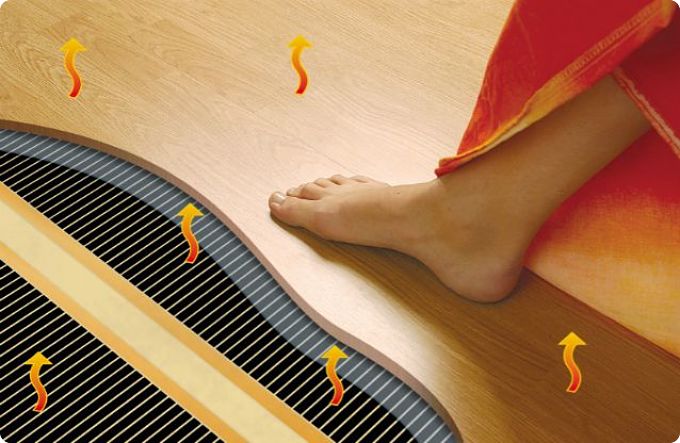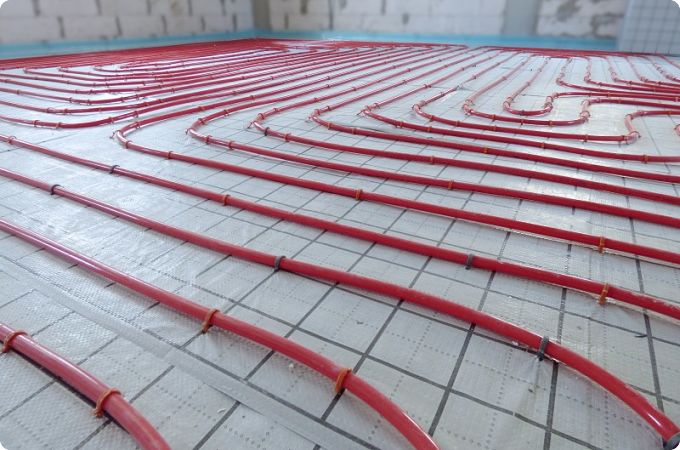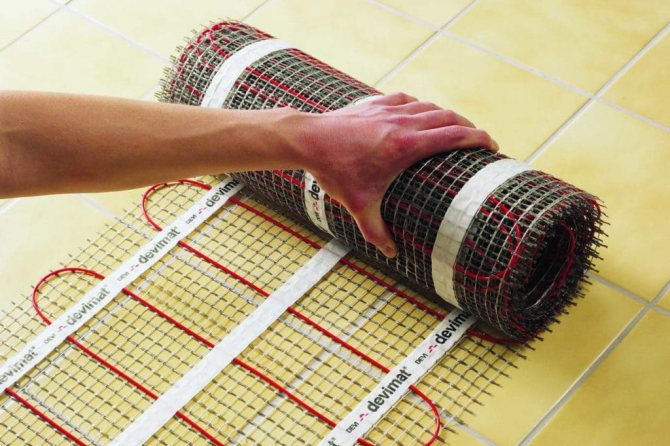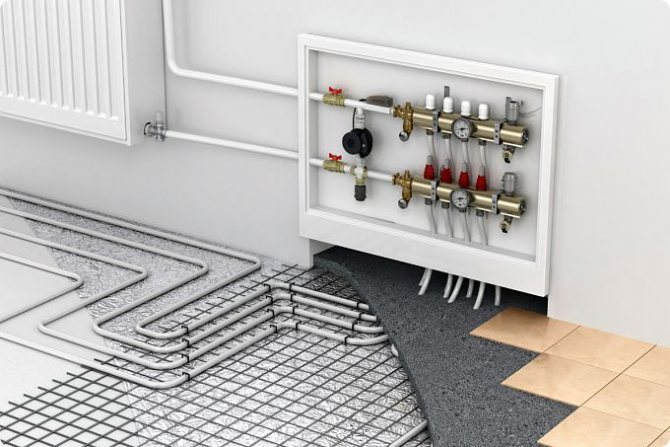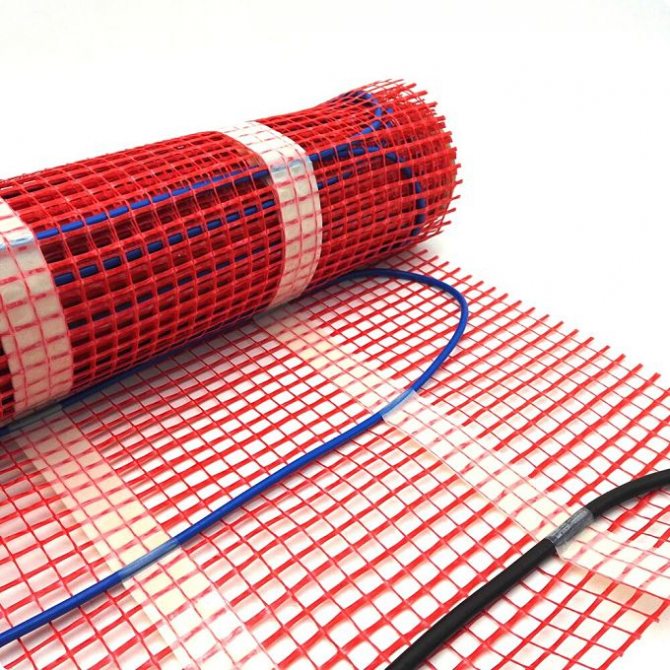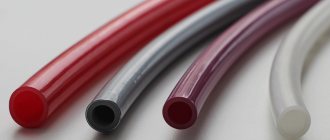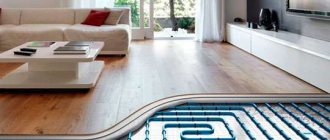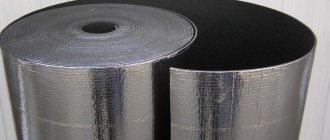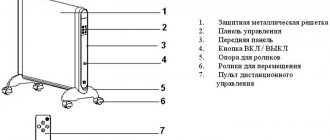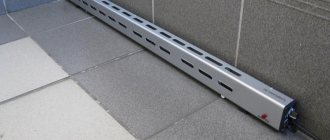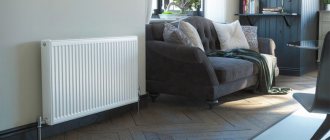Agree, it's nice to walk barefoot on a warm floor, even when it's winter outside. And it is not necessary to cover everything around with dust-collecting carpets. To maintain the desired surface temperature, there are special technologies.
These are underfloor heating systems that can be combined with classic heating or made the main sources of heat in the house and forget about radiators forever.
Such systems are divided into electrical and water. Which ones to choose to make your home warmer and more comfortable? You can find the right solution if you analyze all the pros and cons of electric and water floors.
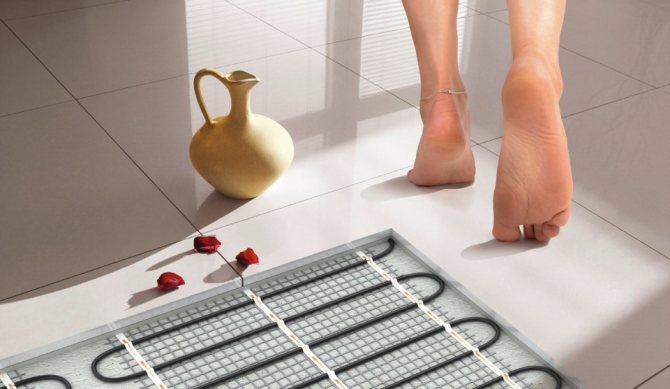
Electric underfloor heating or water heating: comparison
The main difference between an electric underfloor heating and a water underfloor heating is clear by the name and consists in the heating method.
- In the first case, elements are placed under the surface that are heated by electricity and transfer heat to the floor.
- The water floor is made of metal-plastic or polyethylene pipes, through which hot water passes. Such a system provides for the presence of a boiler and a control unit.
There are many differences between these two types of systems. We'll go through the main ones.
Important characteristics
To understand which warm floor to choose - electric or water, first you need to understand the main properties of these systems. It is important to understand that several systems fall under the general name “electric warm floor”. They differ in installation, price and operating principles.
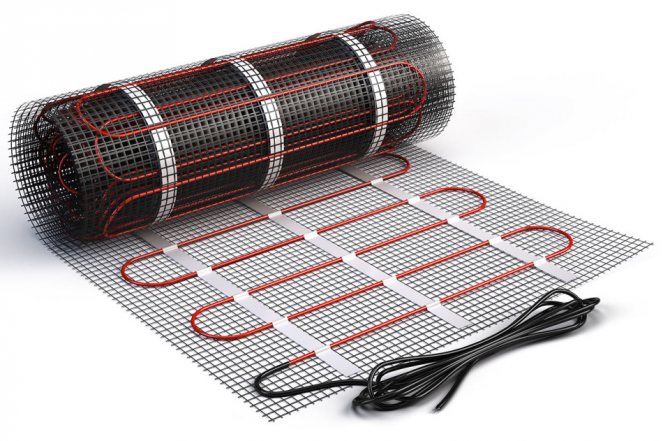

There are two main types of electric underfloor heating:
- infrared;
- cable.
In the first case, it is a carbon-coated film or carbon rods in mats. The floor is heated by infrared waves and transfers heat upward. These are the easiest systems to install.
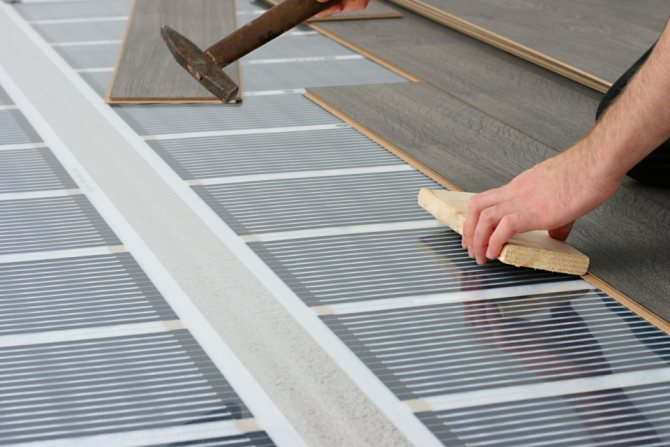

Cable underfloor heating can look like separate wires or finished mats. Ready-made mats are much more convenient.
Cable systems are divided into:
- standard resistive
- modern self-regulating.
The latter are much more economical and have improved properties.
As a rule, conventional cable systems should not be installed under furniture, otherwise the cable may overheat and deteriorate. Self-regulating cables can be installed under the entire floor.
Security
Clearly, water floors are safer. The worst thing that can happen to them is a leak.
Although the installation of an electric underfloor heating is relatively simple, an electrician must be involved in the process. Improper installation and connection of the cable can threaten minor and major troubles with the electrician. It is recommended to make reliable insulation and provide grounding.
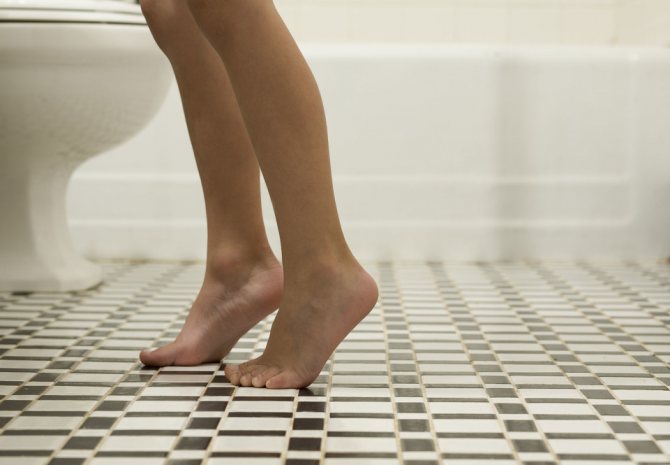

Another problem with cable floor heating is electrical radiation. Although it does not exceed the legal limit, it is believed to be detrimental to health. Heating with infrared waves is called safer.
Reliability
Provided that the wiring meets all modern requirements, electric floors can last 30 years. But the water system will sometimes have to be repaired. Although the pipes themselves are durable, various fittings and other connectors will wear out over time and need to be replaced.


Therefore, when laying a water floor, they are now trying to carry out installation without a screed, using special profile mats, into which it is convenient to fasten pipes.
Which floor heating is better: water or electric?
In general, water is better, in any case, because it is more reliable and durable. Electric floors have one big drawback - they cannot withstand heavy furniture. We emphasize - heavy, for example, a kitchen set. If it stands on electrical wiring, then over time, thermal overheating will occur and the entire floor will cease to function.
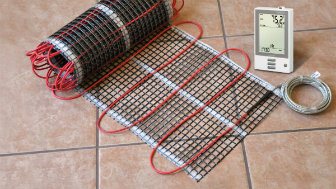

And it is absolutely impossible to fix such a breakdown (however, like finding a burned out place), you need to completely remove the entire cover and change the heating system. And, okay, if we are talking about a laminate that can be disassembled and reassembled, but if a tile? You cannot remove it without chips, it is simply impossible.
Many do this: they calculate the places where the furniture will stand and this place is left free. But, in this case, you need to be prepared for the fact that you will no longer do any rearrangements.
And the water one is durable, very practical, but it also has its "buts".
In apartment buildings, it cannot be done, since excess pipes can lead to an imbalance of the entire system or the removal of heat from neighbors. Also, in order to lay pipes on the floor, it is necessary to completely remove all batteries, therefore, this option is suitable if you plan to equip the entire apartment like this, and not just the kitchen.
Then, heating water in the case of central heating is just a lottery. Today they heat well, but tomorrow the batteries are barely warm. And, if the radiator on the wall will definitely give off minimal heat, then the floor will be much worse, because the pipes are covered with a thick layer of screed and tiles ...
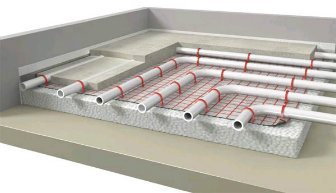

No, of course you can do it on a "grand scale" by putting your own, individual heating boiler. But it is expensive, very expensive.
Well, and most importantly, for this type of work it is necessary to obtain permission, which is not always possible even for a bribe.
Therefore, think three times if you decide to make such a floor in an apartment. First, find out if the utilities will give you the go-ahead and only then act.
And one more thing: the water floor “eats up” the height of the room, and, quite significantly, by about 15 centimeters. For "stalinka" with three-meter ceilings - this is not a problem at all, but for "Khrushchev" it is no longer the best option.
The ceiling height in the apartments of that era is only 2.20 meters. Well, where else to cut?
Other pros and cons
The main advantage of the electric underfloor heating is that it can be used “pointwise”, for example, only in the children's play area and toilet. And it is possible to turn on the system as needed.
The downside is that electricity is more expensive than water. Even with the most advanced electrical system, get ready to invest in your comfort.
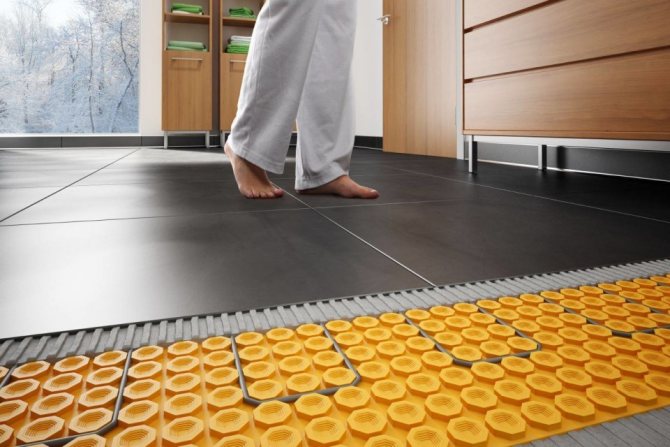

Remember that electrical systems are current source dependent. If there are frequent power outages in your area, you will have to provide an uninterruptible power supply for your home network.
The main advantage of a water-heated floor is cost-effectiveness. Although you will need to spend a lot more money on the installation, in the future your efforts will pay off.
If you live in an apartment of a multi-storey building, most likely, a water-heated floor is not for you. For such work, you must obtain a special permit. Indeed, for floors, such a system is a huge load. In addition, by connecting to central heating, you will reduce the heating quality of neighboring apartments. And if the system leaks, the consequences will hit your pocket hard.
Brief summary
So, let's summarize the preliminary results. We found out that water floors have the following advantages:
economy in use;
- security;
- no radiation.
Minuses:
- more expensive installation;
- the need to replace fittings;
- possible leaks;
- the problem of installing a high-rise building in an apartment.
Electric underfloor heating also has its advantages:
- ease of installation;
- the ability to install high-rise buildings in an apartment and point-to-point in certain areas;
- long service life.
And the cons:
- the cost of paying for electricity;
- the presence of radiation;
- danger of electric shock and fire due to improper installation;
- the need for an uninterrupted source of electricity and good wiring.
In any case, underfloor heating (electric or water) has one important advantage - it creates a feeling of coziness and gives our feet warmth, which is extremely important for health.
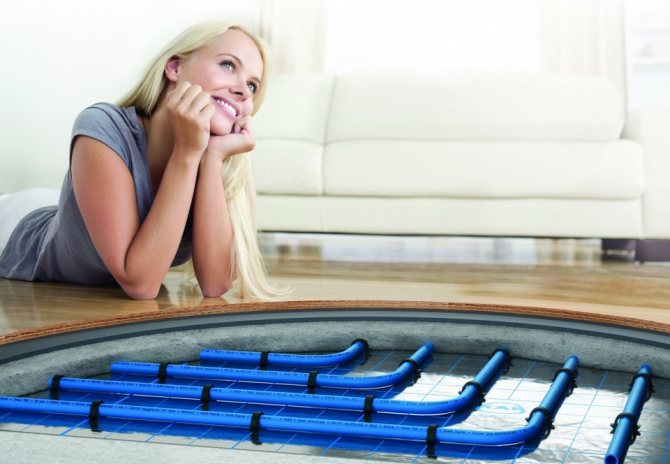

Warm floor in the bedroom - pros and cons
The main advantage of such floors is the ability to walk barefoot without fear of catching a cold. This is especially important for the bedroom, because getting out of bed is much more pleasant to touch the warmed surface. The use of underfloor heating increases heating efficiency and reduces heating costs in the cold season by almost 30%. And also to exclude the formation of mold, because the corners of the room will always be dry.


Source: lenremont.ru
The indisputable advantages are:
- long service life;
- maintaining an optimal microclimate - an automatic regulation function allows you to set the required temperature regime during the day and at night;
- absolute safety - heating elements do not come into contact with the floor covering, which eliminates the risk of electric shock during wet cleaning. The surface temperature does not exceed 30 degrees, which means that it is impossible to get a burn when walking barefoot;
- the elements of the mechanism are invisible, so this is not reflected in the design of the bedroom.
Considering the installation of a warm floor in the bedroom, it is necessary to list its disadvantages.
First of all, this is a rather high cost of products and their installation. In addition, it is necessary that the installation is carried out by professionals. After all, you will need to lay electrical wiring, connect it to the general system of the room, install special equipment, and make a concrete screed.
Another disadvantage is that such a floor cannot be repaired. In case of failure, the old system will have to be replaced with a new one. And this is not only an additional waste, but also a full range of repair work.
When laying a warm floor in a bedroom, you should carefully consider the choice of flooring. Only a type of finish that has high thermal conductivity is suitable.
Note! The finish must be of high quality, made of natural materials, so that when heated, its surface does not emit toxic substances!
Finishing coatings for different types of underfloor heating
It is important that underfloor heating coatings are suitable. There are the following recommendations:
To the water floor is preferable:
- laminate;
- parquet;
- linoleum on a thin substrate;
- ceramic tile;
- self-leveling floor.
For an electric underfloor heating system, it is recommended:
- laminate;
- thin parquet;
- ceramic tiles;
- linoleum without insulation;
- self-leveling floor.
For a film electric underfloor heating, it is advised to use laminate and non-insulated linoleum.
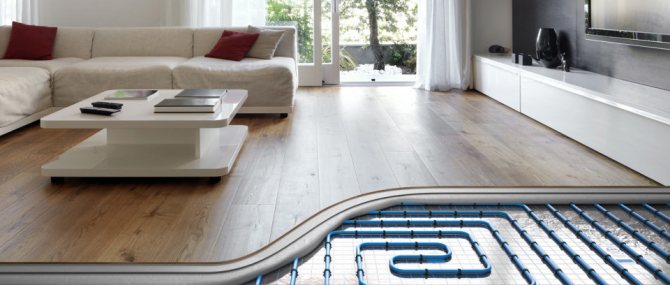

Underfloor heating electric or water - which is more profitable?
So which floor is more profitable, water or electric? Having analyzed all the advantages and disadvantages of the systems, it is easy to answer this question. Let's analyze the benefits point by point.
- For residents of high-rise buildings, only electrical options are uniquely suitable. The only exceptions are apartments on the ground floor with a modern heating system, so that your water floors do not harm your neighbors.
- But the owners of private houses have a wide choice. All types can be used.
- For temporary heating and heating in certain areas, it is more profitable to choose electrical systems.
- For permanent heating throughout the entire area of the house, it is better to choose water floors.
- Which warm floors are more economical, water or electric? Here, as we found out, the first ones win.But installation is usually more expensive.
- If you choose the most economical of electrical systems, give preference to self-regulating cable or film infrared.
Of course, which warm floor is better to choose is up to you. Follow our recommendations and make your home even more cozy and comfortable!
